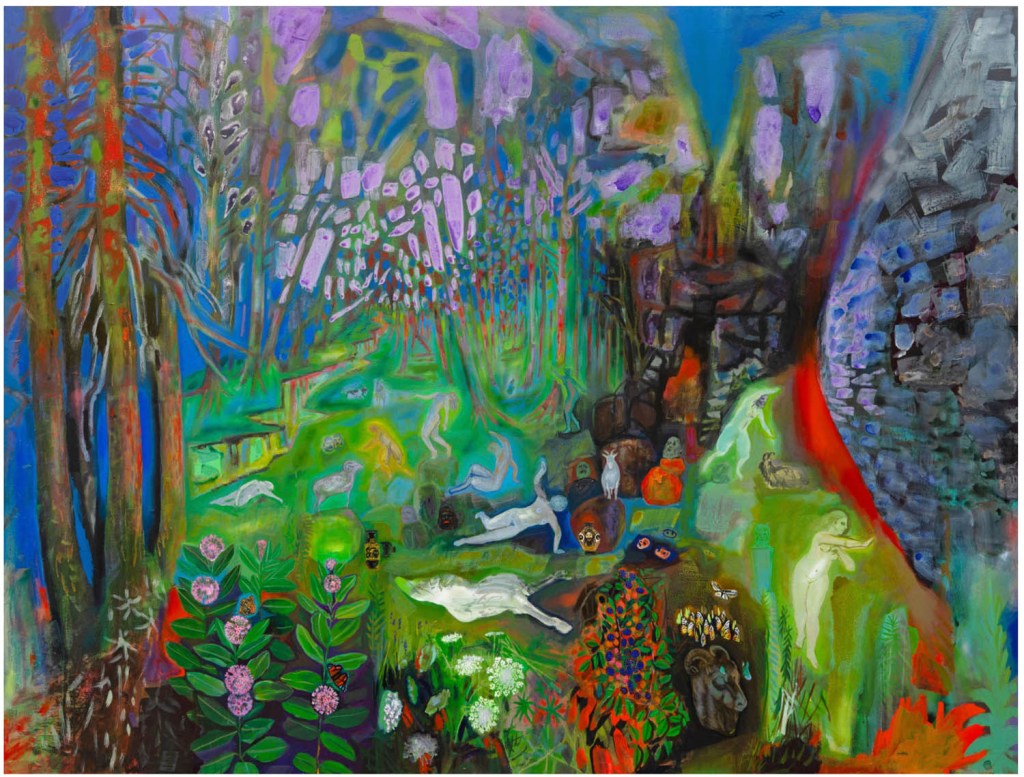
Contributed by Jonathan Stevenson / Several notable painters – Julie Heffernan, Jules de Balincourt, and Alexis Rockman, among them – have seized on the perils of climate change. In Jennifer Coates’s new solo show “Edge Effects,” jointly mounted at Chart Gallery and High Noon Gallery, she drills deeply into the subject and emerges with work that dazzles to engage, and vice-versa. The show’s title is an ecological term for what happens when one habitat impinges on another, which climate change is accelerating and amplifying. The phenomenon implies crowding, ergo potential conflict and trouble, and Coates’s canvases are appropriately busy and calculatedly unnerving. Bacchanal, a large painting, depicts the jangled co-location of lush plant life, bemused animals, and humans naked but often distressed. No doubt intentionally, it’s a far cry from Nicolas Poussin’s eponymous seventeenth-century study ingenuously celebrating sensuality. For Coates, the title sharply intimates collective hedonism gone awry. Touché.

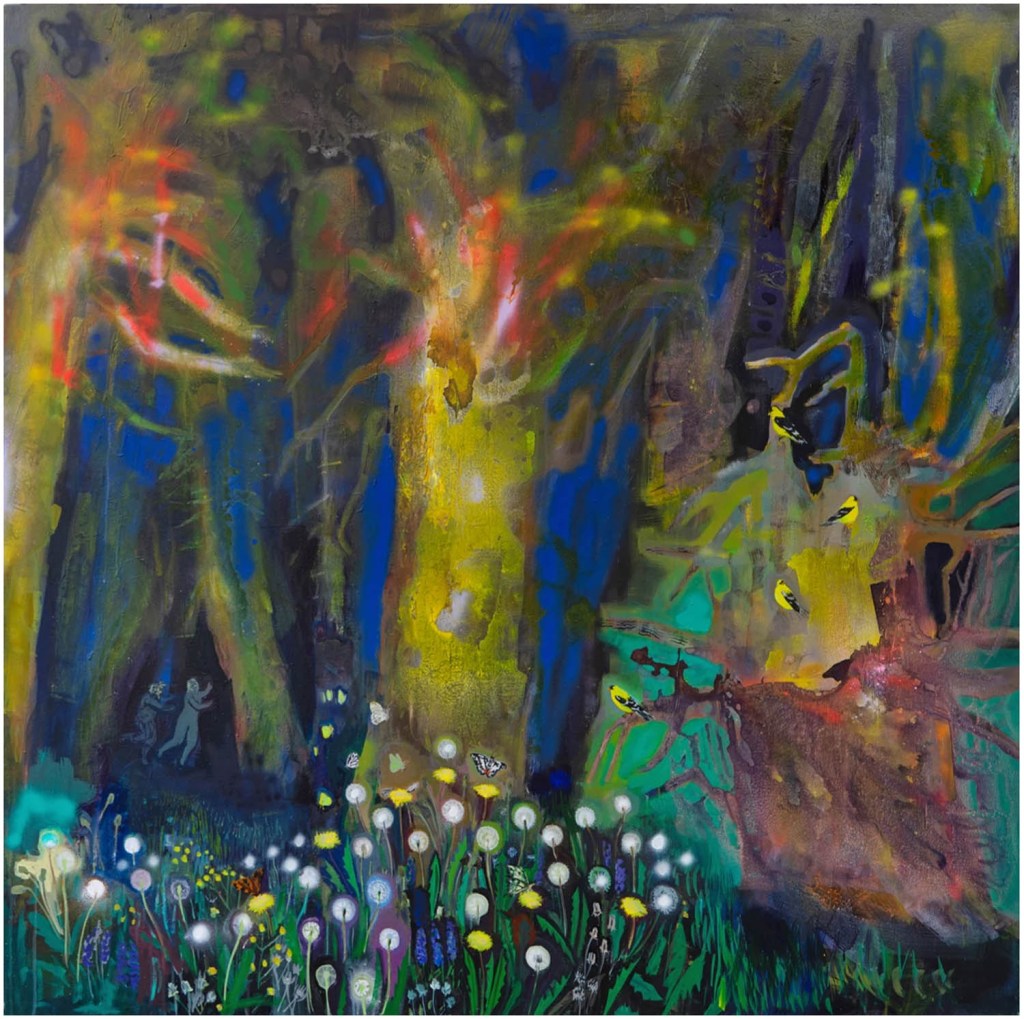


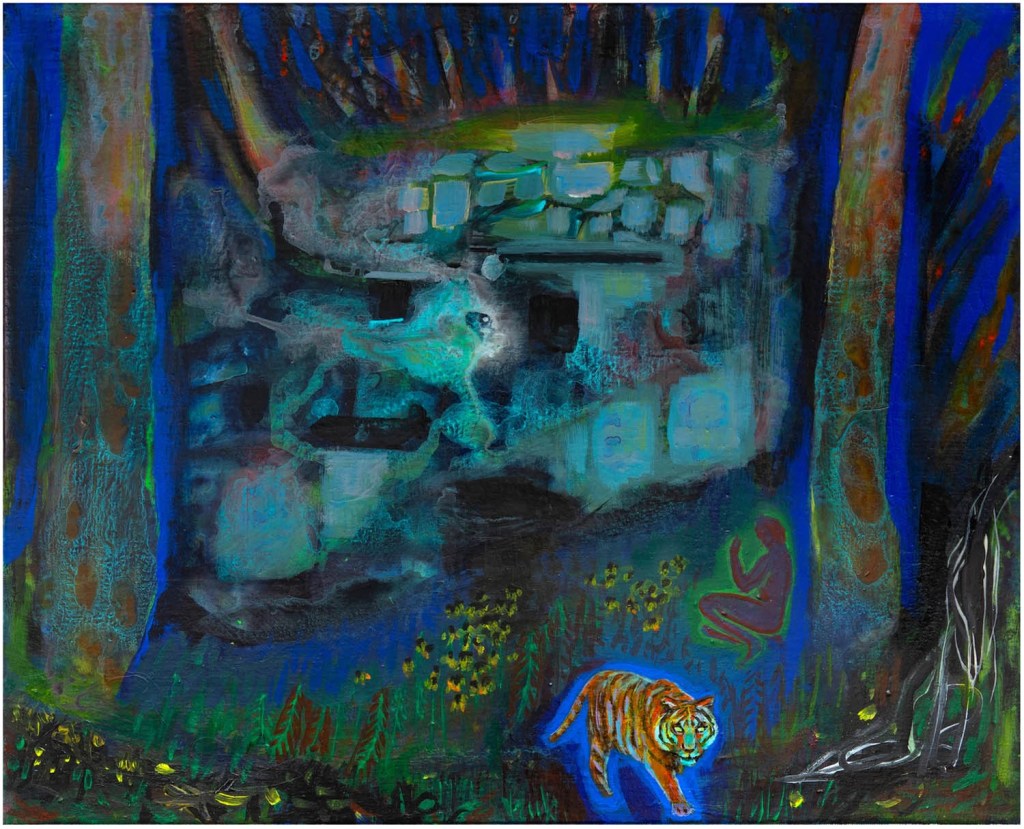
Coates does not shy away from foreboding directness. Bacchanal’s juxtaposition – possibly correlation – of mythic indulgence with actual decay is echoed in Diana with Moths, Bindweed, Dead Pines, and Pinecones; Pan and Syrinx with Dandelions, Butterflies, and Goldfinches; and Upside Down Nymph and Passage Tomb. See also Dug Up Heads and Wild Allium and Dug Up Heads, Allium, and Mud-Puddling Butterflies, which carry unmistakable Munch-esque allusions; the matter-of-factly dark Tiger, Bather, and Bunker and Auspicium with Goldfinches, Ram, Ditch Weeds and Rocks; and the jauntier but still cautionary Yew, Leopards, Poppies.



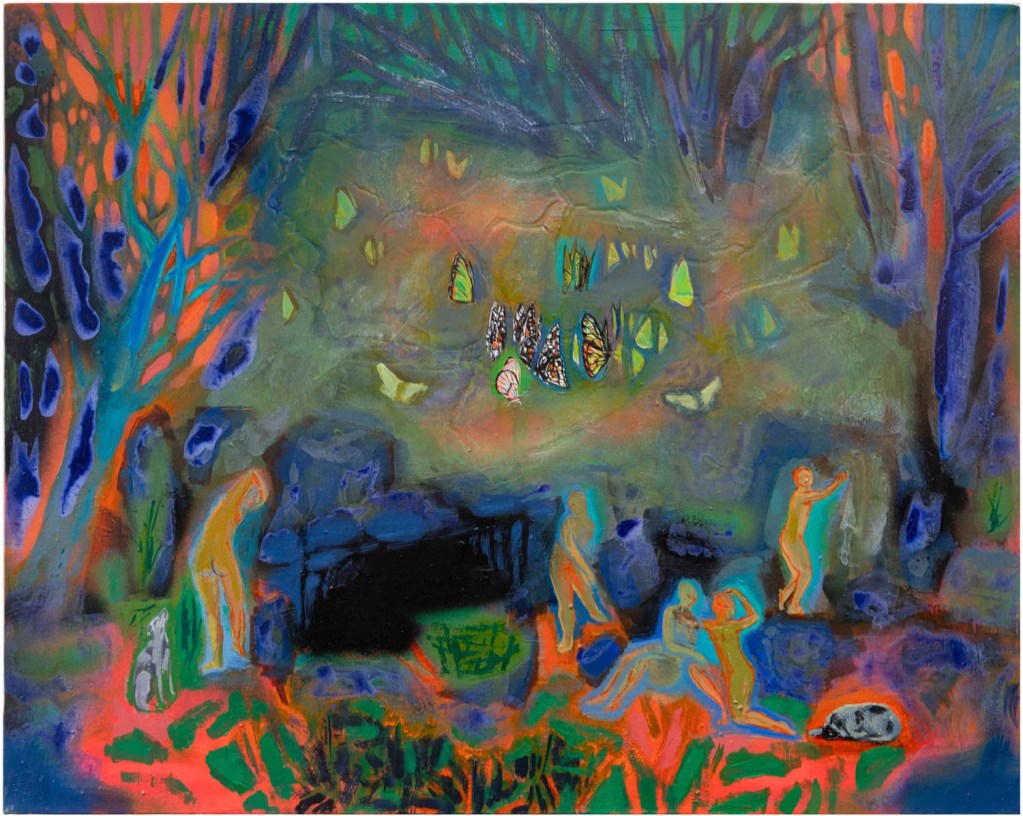

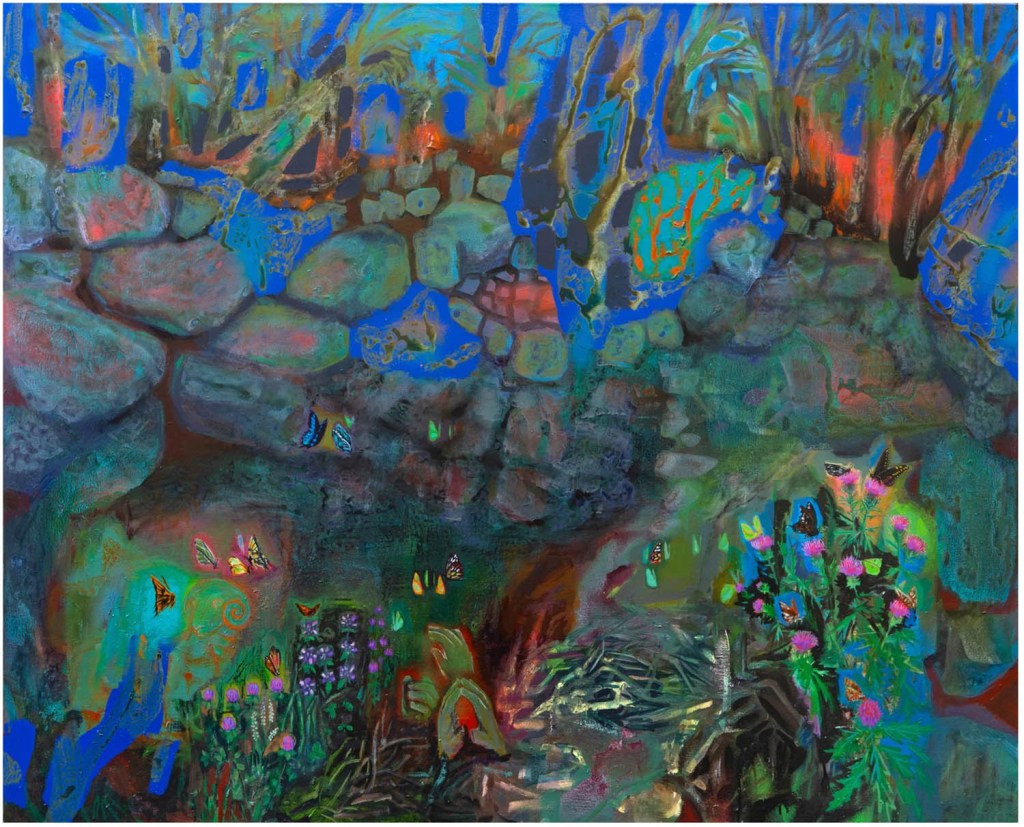

She avoids being too on-the-nose in tone or content by way of more liminal, less threatening scenarios in paintings such as the almost lyrical Maenad and Butterfly and Grotto with Butterflies, Nymphs, and Hounds and the rather pastoral Auspicium with Sparrow, Poppies, Ruin, and Crouching Figure. Certainly, all is not lost. But Hands, Ram, Ditch Weeds, Butterflies, and Rocks unites elements from other paintings in a borderline morbid picture. Two Coyotes and Ruin, though tiny, is by the same token singularly succinct, and it is somber if not quite melancholy, like the aftermath of a forest fire. Perhaps that is the note that Coates means to strike most firmly.
The artist’s existential appreciation for broad organic integrity carries into her studio. To a canvas, these works manifest careful deliberation in composition as well as cagey paint handling, by turns ungainly and graceful. Ominous motifs tend to be dark, flat, and opaque, sublime ones luminous and variegated. These devices are intuitive and well clear of excessive contrivance – indeed, the show is about humbly recognizing disorder and respecting the narrowing margins for accommodating it. As a group, visually and thematically, the pieces coordinate, segue, interlock, and complement, achieving cohesion in portraying discord.
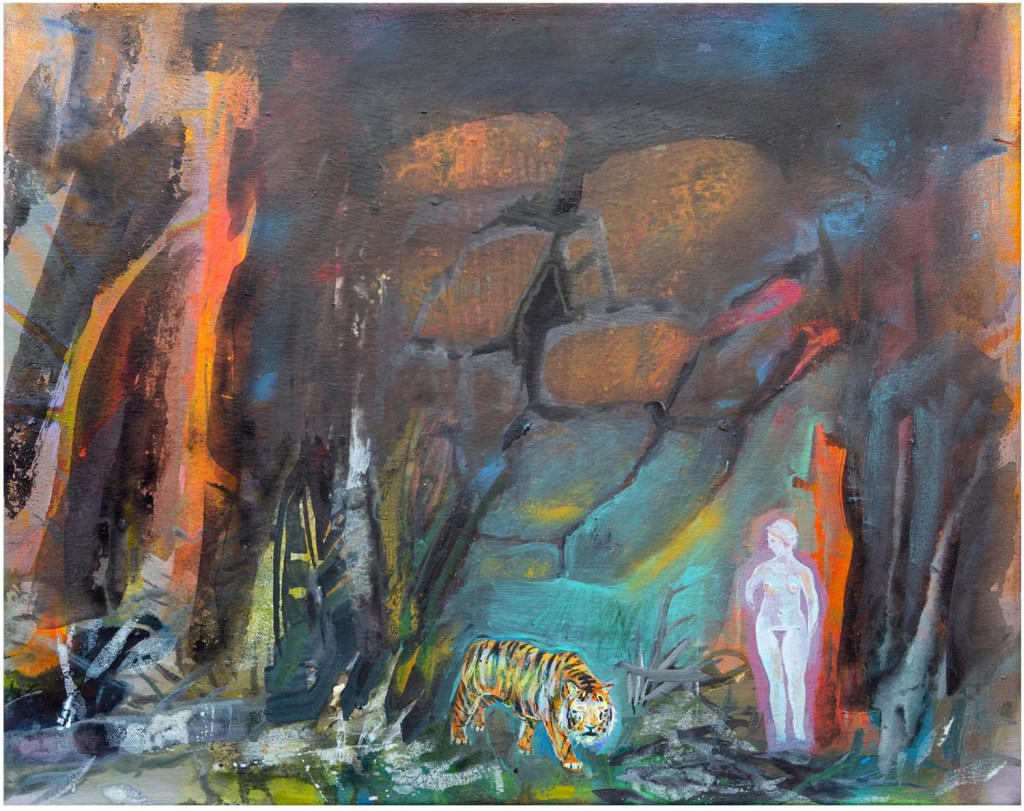

Recapitulating the double edge of even the best-intended human activity, Coates acknowledges the irony of using acrylic and spray paint – artificial and potentially harmful chemicals – to render tableaux that at once celebrate the wonder of adjacent worlds and signal their imperilment by human invention as well as natural imbalances from noxious undergrowth, predators, and the contingencies of time. Compressing this dynamic are Tiger and Broken Sculpture and Relics and Invasives, which might serve as this fine exhibition’s legend or coda. In all, Coates has formulated incisively complex and poignant concept and realized it forcefully on the canvas.


“Jennifer Coates: Edge Effects,” Chart Gallery, 74 Franklin Street, New York, NY; and High Noon Gallery, 124 Forsyth Street, New York, NY. Through June 22, 2024.
About the author: Jonathan Stevenson is a New York-based policy analyst, editor, and writer, contributing to the New York Times, the New York Review of Books, and Politico, among other publications, and a regular contributor to Two Coats of Paint.

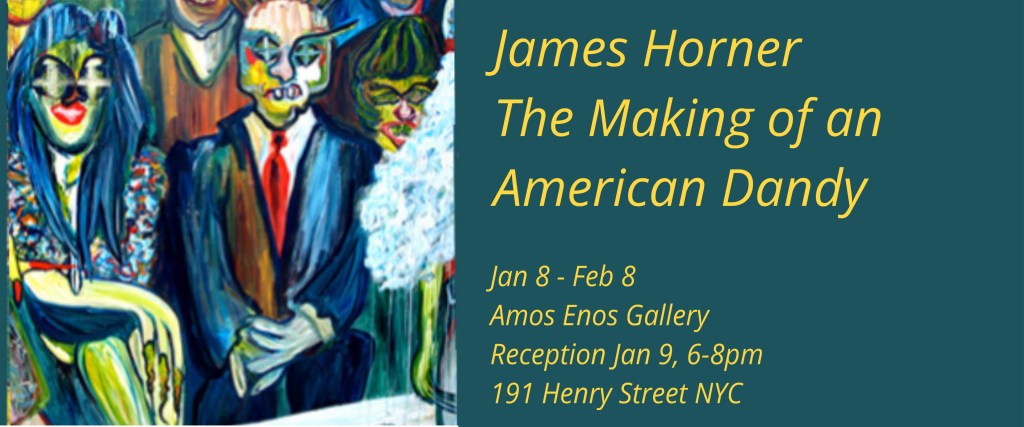



















There was a curious edge effect here in coastal northern California. The Eastern Pacific Ocean had a large mass of warm water for several years starting in 2013. Productivity dropped off in the warm surface waters and the animals that usually fed offshore were compressed into a band much closer to shore following the cooler water more normal to their habitat.
these paintings look so good congratulations Jennifer!